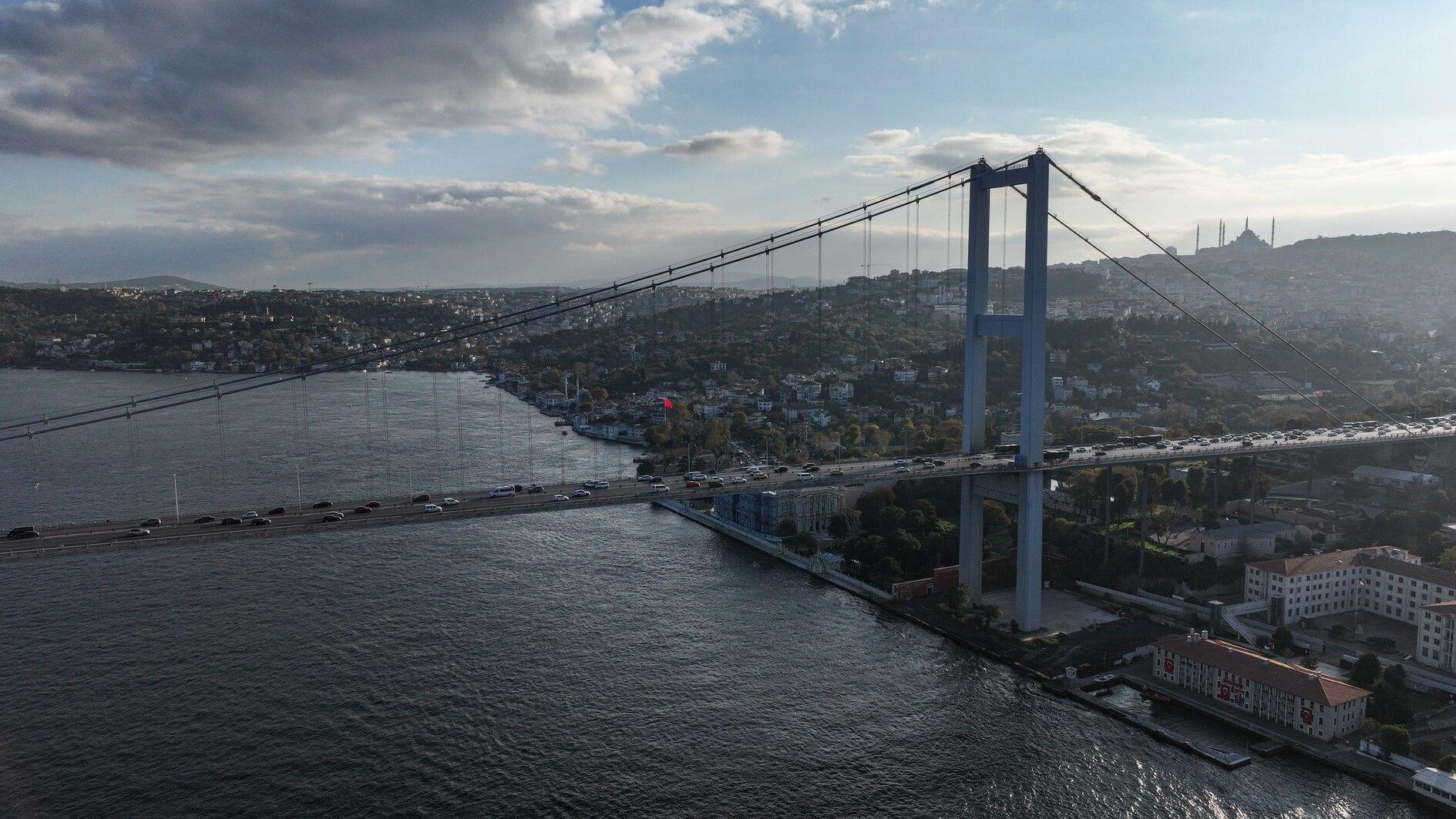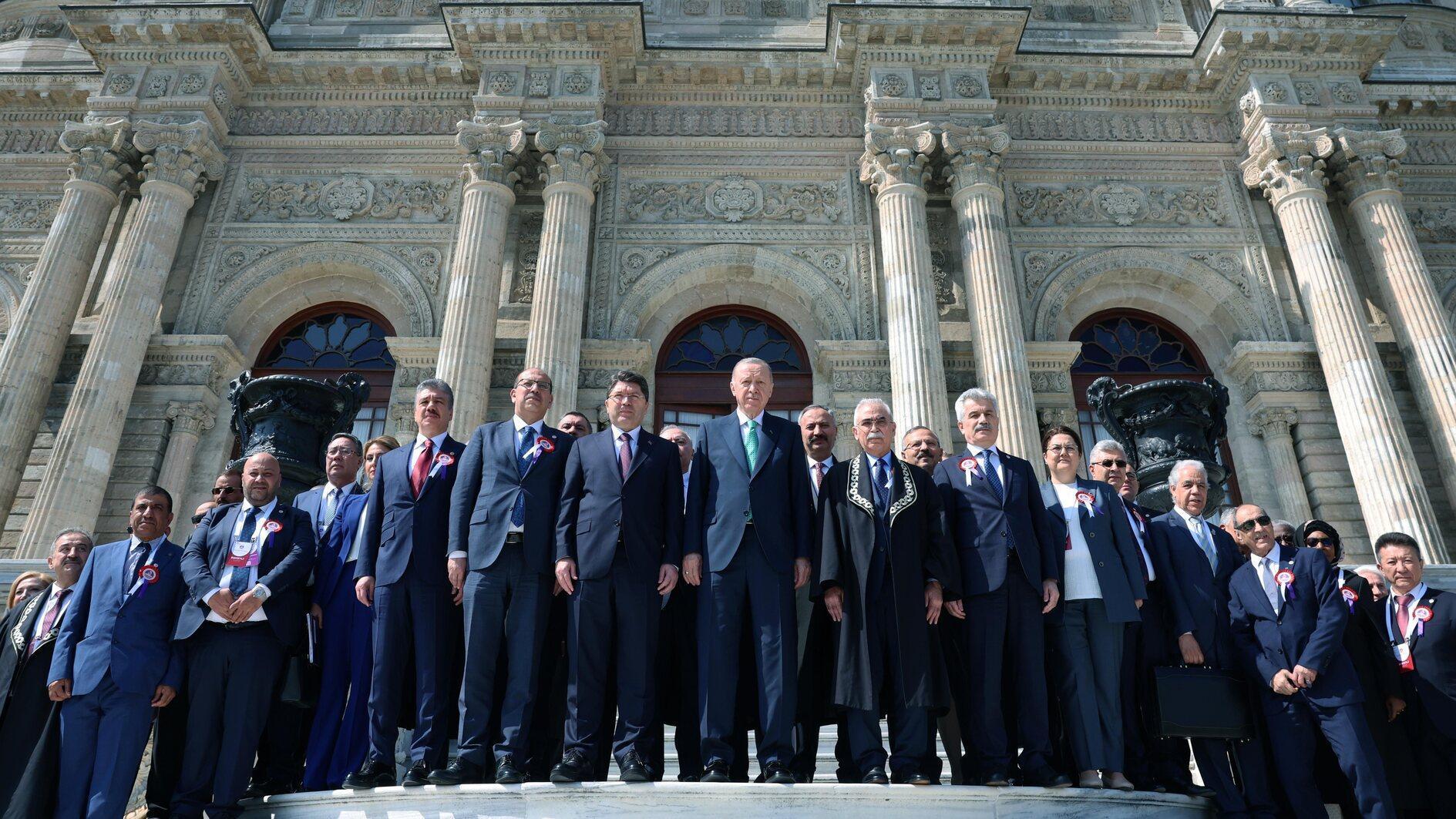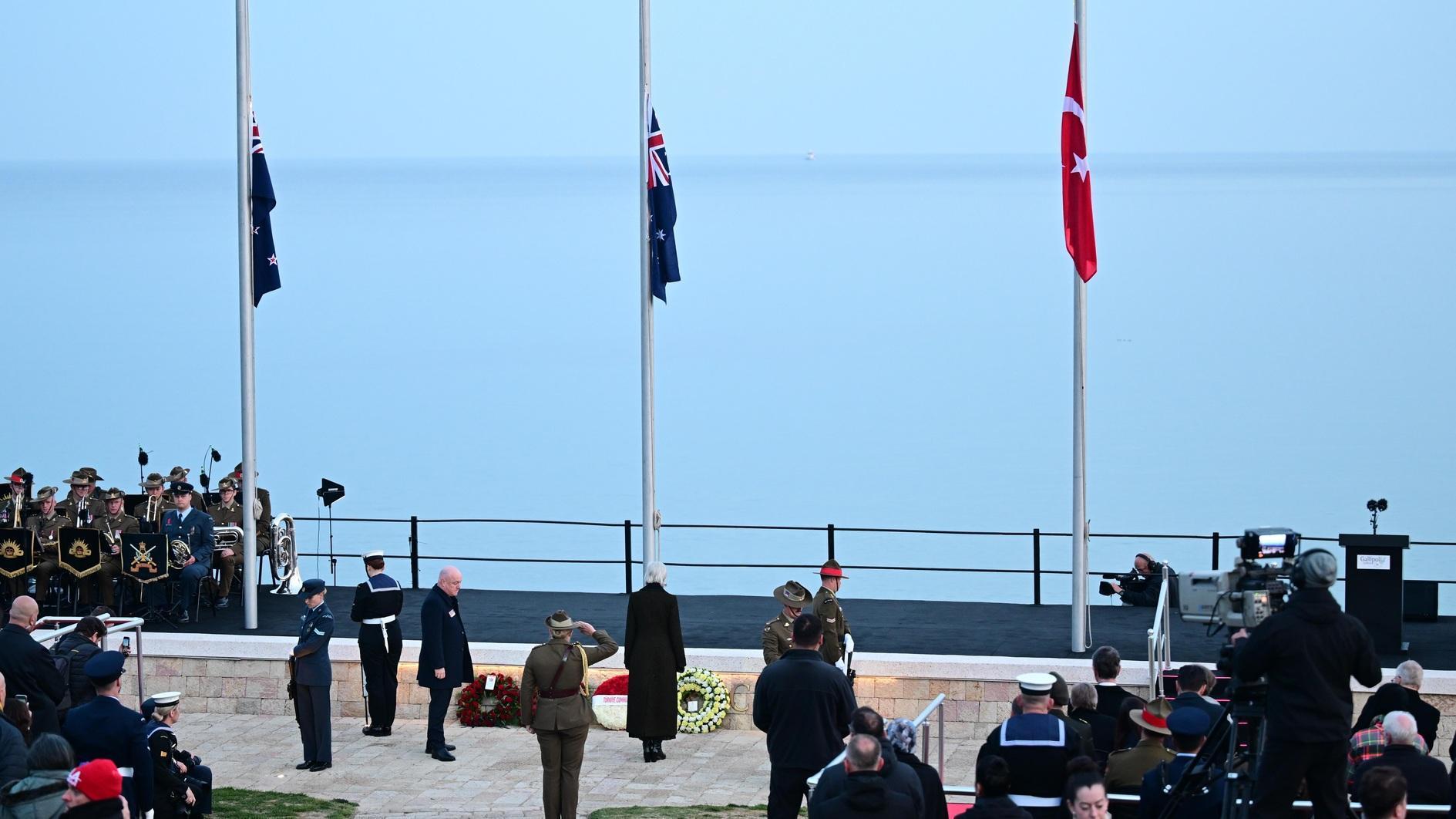First Bosphorus bridge commemorates 51st anniversary
ISTANBUL

Inaugurated 51 years ago as the first Bosphorus bridge to unite the Asian and European sides of Istanbul, the July 15 Martyrs’ Bridge has been a vital component of the transportation network of the historic metropolis since then, with around 190,000 vehicles driving across the bridge per day at present.
The megacity began to rapidly urbanize after the second half of the 20th century, with communities expanding, waves of migration occurring, and traffic volume climbing, bringing the motivation for the bridge’s construction.
The steps that the authorities contemplated taking in this regard back in the 1950s took a more tangible shape as the 1970s approached.
Following the approval of a project on the construction of the bridge, German and British companies commenced working jointly to build the bridge in Feb. 1970.
The bridge was constructed 3 years and 8 months later and cost about $23.2 million, with former President Fahri Korutürk officially unveiling it on the 50th anniversary of the founding of the Turkish Republic.
Following this development, the bridge served as the sole road link for ground transit between the two sides of Istanbul for 15 years, handling an average of 24,000 cars per day in its initial year of operation.
After years of standing alone, the bridge became colloquially known as the “First Bridge” following the construction of the Fatih Sultan Mehmet Bridge further north in 1988. Aftermath, Yavuz Sultan Selim Bridge and Eurasia Tunnel came into service in 2016 as well.
When first opened, the bridge featured pedestrian access, with two designated walkways. However, due to safety concerns and an uptick in suicides, pedestrian access was eventually prohibited, leaving the bridge to serve vehicular traffic exclusively.
The Transport and Infrastructure Ministry is currently evaluating a concept that would allow pedestrians to use this historically vital bridge with existing pathways that have been closed following such security issues.
Although still in its conceptual phase and yet to progress into a formal project, the initiative is being framed as a "touristic venture" that would be strictly regulated and limited, according to information provided by ministry officials to daily Hürriyet.
Originally christened the Bosphorus Bridge, it has been operating under its current name since July 26, 2016, in a bid to commemorate the citizens who lost their lives during the foiled coup, led by the terrorist group FETÖ's U.S.-based leader Fetullah Gülen. This coup attempt targeted key locations in the capital Ankara, Istanbul and elsewhere, resulting in the loss of 251 lives and injuring around 2,200 people.
















